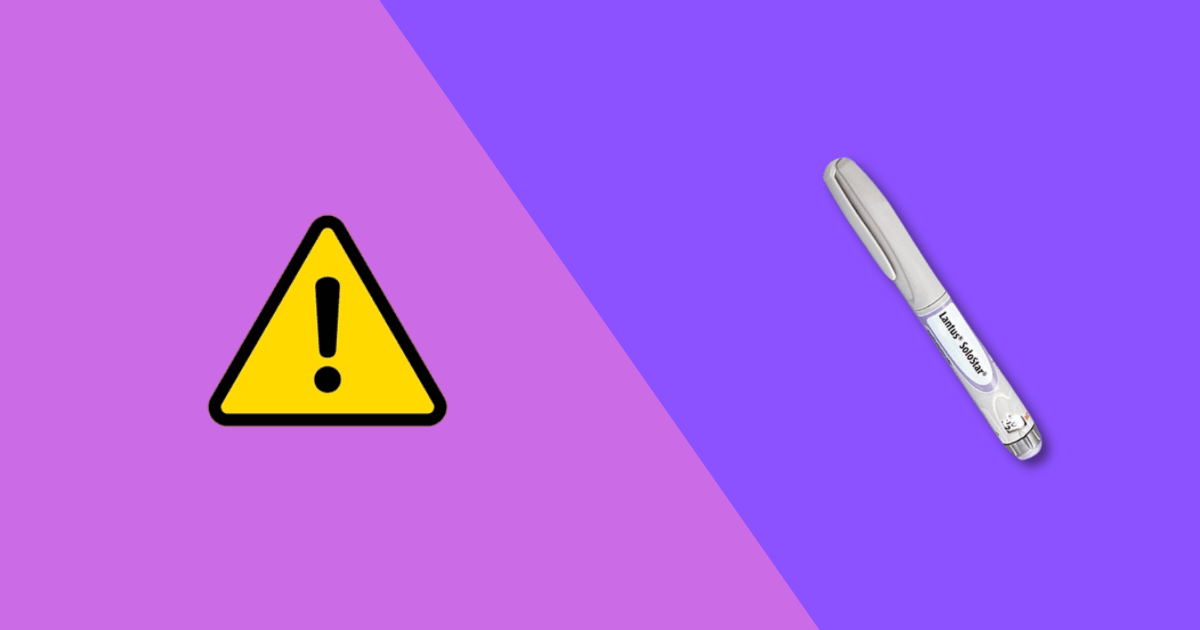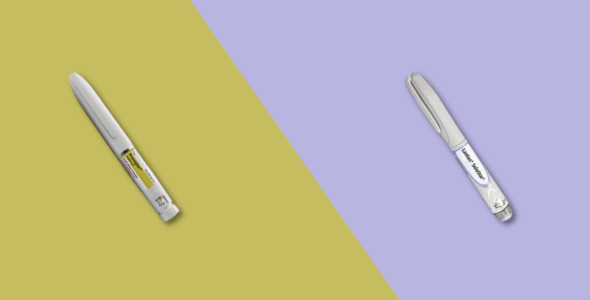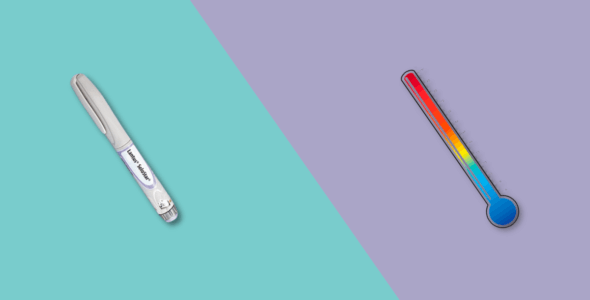Lantus side effects and how to avoid them
Table of contents
Lantus is an FDA (U.S. Food and Drug Administration) approved brand-name medication manufactured by Sanofi-Aventis. It is classified as a long-acting insulin and is used for diabetes treatment. While Lantus is generally well tolerated, there are some potential side effects that people should be aware of. The most common side effects of Lantus include injection site reactions. Less common but more serious side effects can include serious allergic reactions.
Learn more about the side effects of Lantus and what you can do to avoid them.
What is Lantus?
Lantus is prescribed to reduce high blood sugar levels (hyperglycemia) in adults and children aged 6 years and over with type 1 diabetes or adults with type 2 diabetes mellitus.
Lantus works in the same way as the insulin your body naturally produces. The medication helps your cells absorb sugar from your blood. As it is a slow-acting version of insulin. One injection can give you all the insulin you need over 24 hours. You inject Lantus under your skin subcutaneously using a syringe or a pre-filled injectable SoloStar pen.
The active ingredient in Lantus is called insulin glargine, a type of insulin that is man-made. Insulin glargine works in a similar way to the insulin your body makes naturally, except it’s been designed to be slower acting to work over a longer period.
When you inject Lantus under your skin, the insulin glargine is released into your bloodstream. It travels around your body and attaches to cells that need sugar. This causes your cells to release a substance that helps them absorb sugar from your blood. Insulin glargine can be active for up to 24 hours, so it can cover your insulin needs for up to a day.
Lantus dosage
Lantus is available in injection form in the following doses: 10 mL multiple-dose vials and 3 mL Lantus SoloStar prefilled insulin pens.
Individualize your insulin dose based on your diabetes, metabolic requirements, blood glucose results, and your glycemic control goal. Inject subcutaneously into the abdomen, thigh, or upper arm once daily at any time, at the same time each day. Rotate the injection site to reduce the risk of lipodystrophy and localized cutaneous amyloidosis.
You are advised to read the medication guide provided with this medicine for the drug information and patient information, and always speak with your healthcare provider for medical advice about any changes to your dose so they can monitor and evaluate your condition.
Lantus side effects
The most common side effects of Lantus include:
- Allergic reactions that can cause swelling of your face, tongue, or throat
- Injection site reactions, like itching, rashes, skin thickening, or pits forming in your skin (lipodystrophy)
- Hypoglycemia (carry glucagon to help increase your blood sugar if needed)
- Edema (fluid retention)
- Blurred vision
- Painful or difficult urination
- Weight gain
Lantus can cause more serious side effects, including:
- Severe allergic reactions, including anaphylaxis that may be life-threatening – skin rash, trouble breathing, fast heartbeats, feeling faint, shakiness, or swelling in your face, tongue, or throat
- Severe hypoglycemia
- Heart failure, if you take Lantus with other medications called TZDs (thiazolidinediones)
- Low potassium levels in your blood (hypokalemia)
If you experience any of these serious side effects, stop taking Lantus and seek medical attention immediately. You are encouraged to report the negative side effects of prescription drugs to the FDA. Visit www.fda.gov/medwatch, or call 1-800-FDA-1088.
Does Lantus cause cancer?
Insulin increases the production and death of cells, increasing the risk of cancer developing. Long-term use of insulin increases your risk for prostate, breast, and colorectal cancers.
Does Lantus cause weight gain?
Lantus may cause weight gain. Speak to your healthcare provider for medical advice if you experience this side effect.
Does Lantus cause joint pain?
Lantus may cause joint pain as a side effect of using Lantus. Joint pain only occurs in adults using Lantus to treat type 2 diabetes. Joint pain is not seen in adults or children using Lantus for the treatment of type 1 diabetes.
Lantus drug interactions
Lantus can interact with other medications, including:
- Thiazolidinedione medications
- Any other diabetes medications, such as metformin or pioglitazone
- Beta-blockers
- Angiotensin-converting enzyme (ACE) inhibitors
- Fibrates
- Corticosteroids
- Protease inhibitors
- Diuretics
- Clonidine, taken to treat a range of conditions, including high blood pressure, ADHD, drug withdrawal, menopausal flushing, and certain pain conditions
- Guanethidine and reserpine, taken to treat high blood pressure
Before taking Lantus, be sure to tell your doctor about all of the medications you are taking to ensure they are safe to take at the same time.
Lantus warnings & precautions
You should not use Lantus if you:
- Are allergic to the active ingredient insulin glargine
- Have a known hypersensitivity to any of the other ingredients in Lantus
- Are under 6 years of age for type 1 diabetes
- Are under 18 years of age for type 2 diabetes
- Have diabetic ketoacidosis – a condition where high blood sugar causes high levels of ketones to build up in your body
Talk to your doctor before using Lantus if you:
- Have any heart problems
- Have any have liver or kidney disease
- Have low levels of potassium in your blood
- Are pregnant or are planning to become pregnant
- Are breastfeeding or are planning to breastfeed
- Are over 65 years of age
You should always check with your doctor or pharmacist before taking any medication, including Lantus, to make sure it is safe for you.
Semglee vs Lantus
Semglee contains insulin glargine-yfgn, a different form of insulin glargine to Lantus. Semglee is biosimilar to Lantus, meaning there is no clinical difference between them. Semglee is as effective as Lantus in helping with blood sugar control but will also have the same side effects and contraindications.
Why is Lantus given at night?
Lantus is a long-acting insulin that reduces fasting blood glucose levels more effectively with less nighttime hypoglycemia compared to other insulins.
How to avoid Lantus side effects
The best way to avoid side effects is to take Lantus as directed by your doctor. Follow your doctor’s instructions carefully, and do not take more or less than prescribed.
If you experience any side effects, talk to your doctor or pharmacist. They may be able to recommend ways to help reduce or prevent some of the side effects.
1. Stick to the recommended dosage
Take your prescribed dose of Lantus recommended by your healthcare professional. Do not take more or less than prescribed.
2. Monitor your blood sugar levels
If you have diabetes, it is important to monitor your blood sugar levels closely while taking Lantus. Check your blood sugar levels as directed by your doctor and report any changes to your doctor immediately.
3. Drink plenty of fluids
Drink eight to 10 glasses of water or fluids every day to help prevent dehydration, which can make side effects worse.
4. Avoid alcohol
Avoid drinking alcohol while taking Lantus, as it can increase your risk of hypoglycemia (low blood sugar levels).
5. Don’t skip meals
Eating regular meals and snacks will help to prevent low blood sugar levels (hypoglycemia).
6. Check your feet
If you have diabetes, check your feet for any cuts, sores, or redness regularly. Tell your doctor if you experience any problems with your feet while taking Lantus.
7. Know the signs and symptoms of Lantus side effects
Signs and symptoms of side effects include allergic reactions. If you experience these symptoms, speak to your doctor for medical advice.
8. Tell your doctor about all medications you’re taking
Be sure to tell your doctor about all other medications you’re taking, including over-the-counter drugs, vitamins, and herbal supplements, as they can interact with Lantus.
9. Get regular medical checkups
It is important to get regular medical checkups and monitor your medical conditions. Your doctor will monitor your side effects and may adjust your dose of Lantus as needed.
Medically reviewed
A medical professional has reviewed this article.


Jamie Winn, PharmD
Jamie Winn, PharmD
Dr. Jamie Winn received his Doctor of Pharmacy in 2002 from the University of South Carolina College of Pharmacy, Columbia, SC. Jamie is a medical reviewer for NiceRx.



